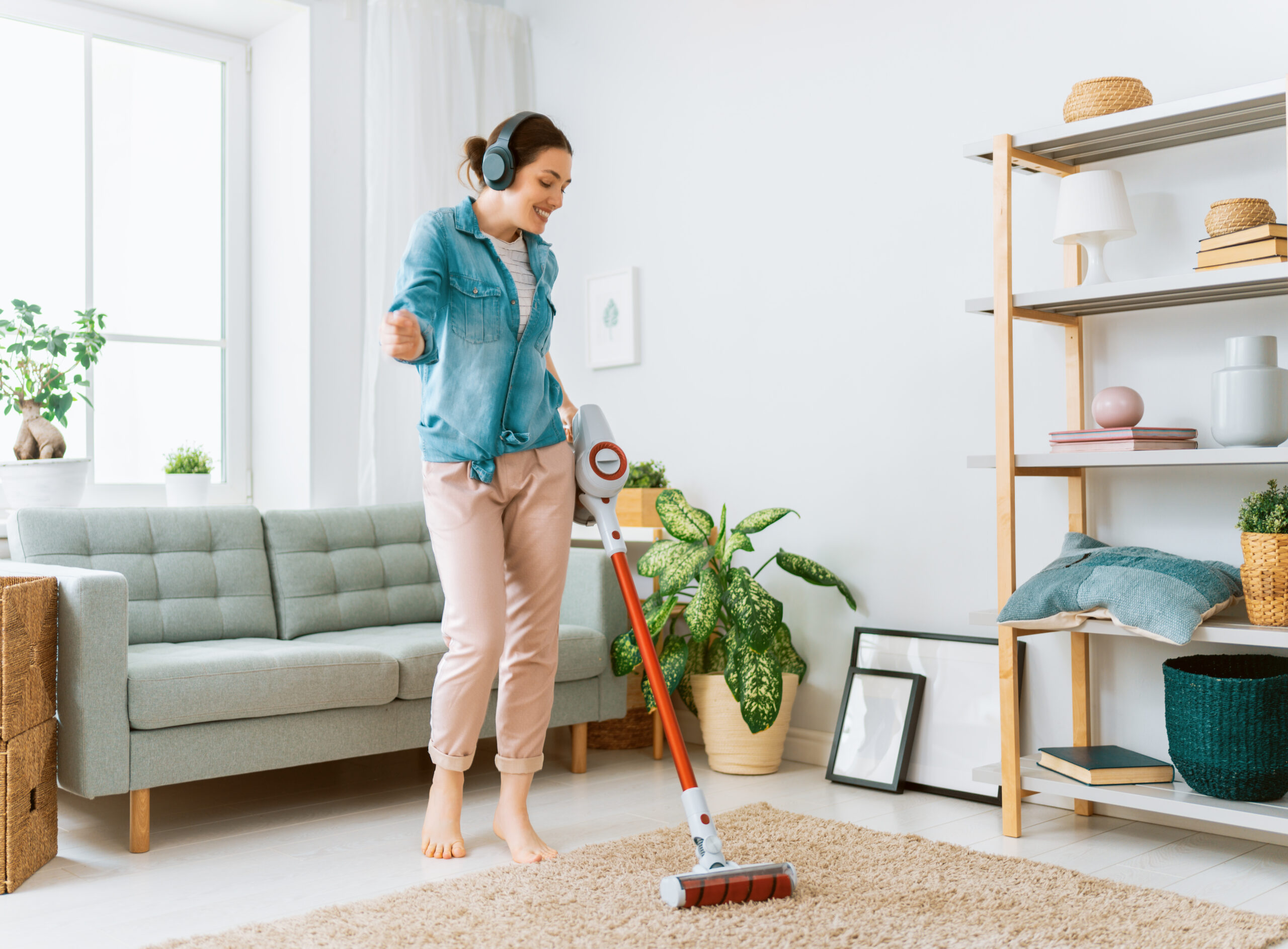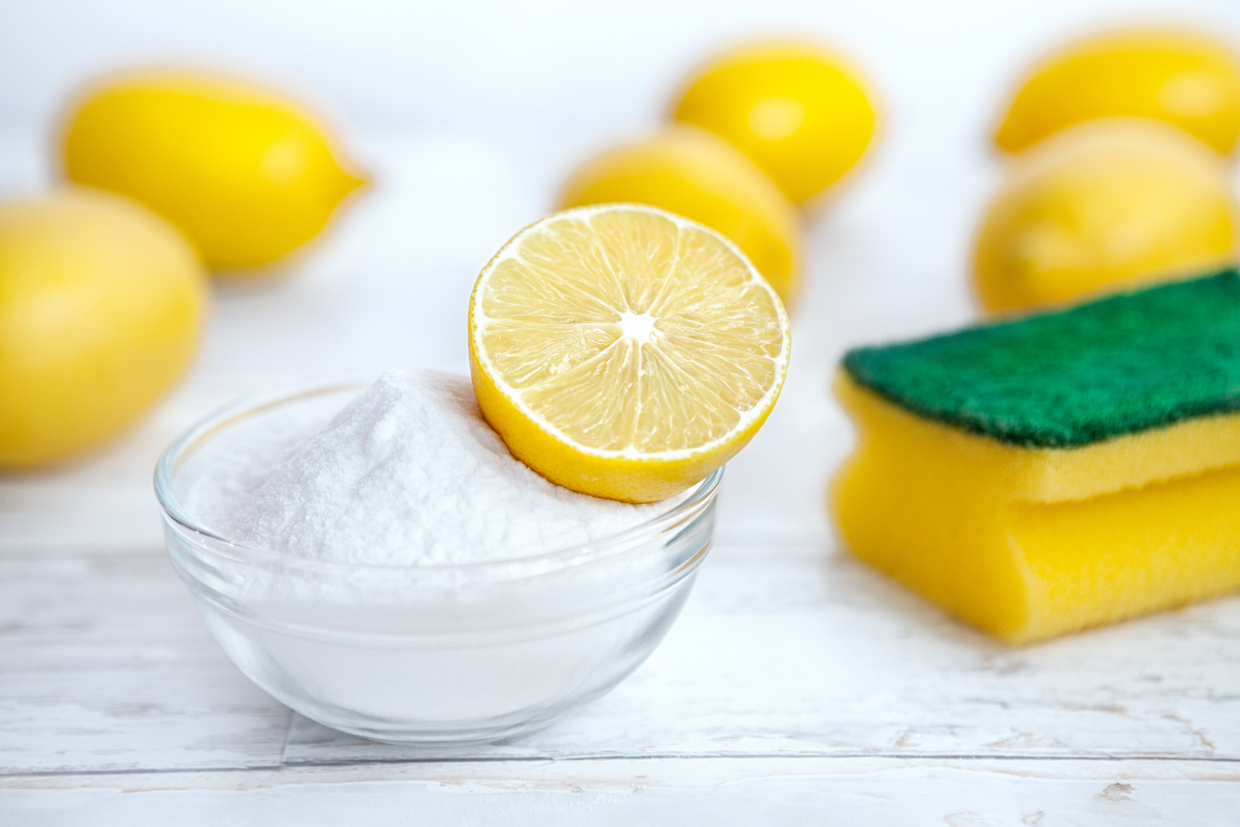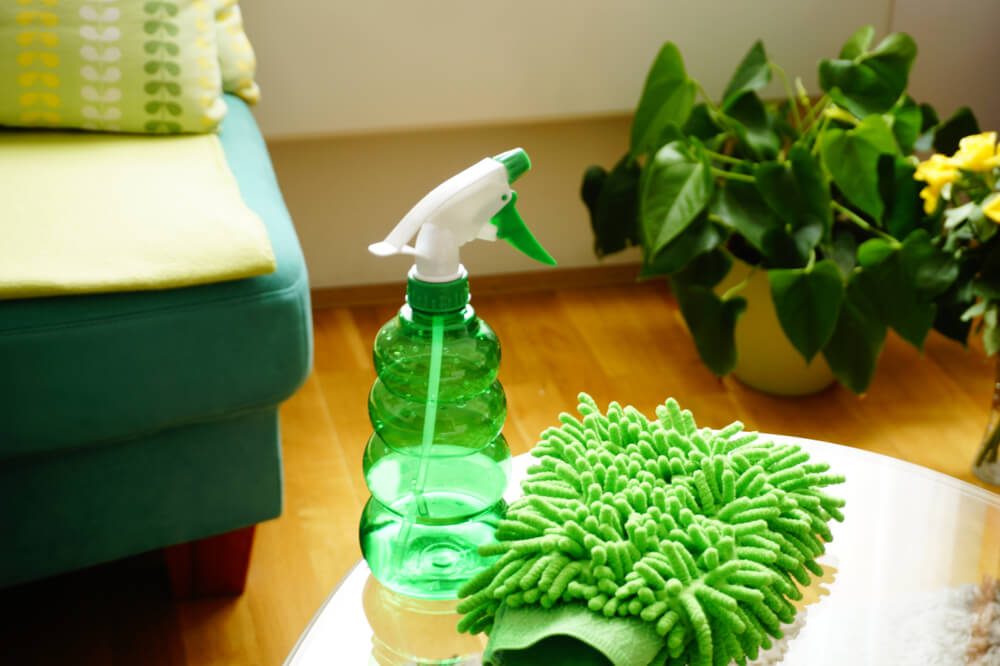Allergies are a common problem, affecting millions of people around the world. They can be triggered by a variety of substances, such as dust mites, pollen, pet dander, and mold. While allergies can be difficult to manage, there are steps you can take to allergy-proof your home and reduce your exposure to allergens. Here are some tips to help you get started:
-
Keep your home clean and free of dust and pet dander.
Keeping your home clean and free of dust and pet dander is one of the most important steps you can take to allergy-proof your home. Allergens such as dust, pollen, and pet dander can accumulate quickly in your home, making it difficult to avoid exposure if you don’t stay on top of cleaning.
One of the most effective ways to remove allergens from your home is by vacuuming regularly. Vacuuming once a week using a vacuum cleaner equipped with a HEPA filter can help capture dust, pet dander, and other allergens that are hiding in your carpets and rugs. A HEPA filter is a high-efficiency particulate air filter that can trap small particles such as pollen, dust mites, and pet dander.
Dusting surfaces frequently is also important in reducing allergen exposure. Dust can accumulate quickly, especially in areas such as bookshelves, ceiling fans, and blinds. Use a microfiber cloth or a damp cloth to wipe down surfaces, which can help trap dust instead of simply scattering it into the air.
Bedding and curtains can also be major sources of allergens in your home. Dust mites can accumulate quickly in bedding, and curtains can trap allergens such as pollen and pet dander. Washing bedding and curtains in hot water at least once a week can help kill dust mites and remove allergens. If possible, consider using hypoallergenic bedding and curtains, which are specially designed to reduce allergen exposure.
In addition to these steps, it’s also important to keep your home well-ventilated. Opening windows and using exhaust fans can help circulate fresh air and reduce indoor air pollution. Keeping your home at a comfortable temperature and humidity level can also help reduce allergen exposure, as high humidity can promote the growth of mold and dust mites.
By following these tips, you can create a cleaner, more allergy-friendly home that can help reduce your allergy symptoms and improve your overall quality of life.
-
Control humidity levels in your home.
Controlling humidity levels in your home is crucial in reducing allergen exposure and creating a healthy living environment. High humidity levels in your home can create a breeding ground for mold and dust mites, both of which are major allergens that can trigger respiratory symptoms such as coughing, wheezing, and shortness of breath.
Using a dehumidifier is an effective way to control humidity levels in your home. A dehumidifier works by removing excess moisture from the air, which can help prevent the growth of mold and dust mites. Experts recommend maintaining humidity levels between 30-50% to create a healthy living environment. Be sure to empty the dehumidifier’s water collection tank regularly and clean the device as directed by the manufacturer to prevent mold growth inside the unit.
If you live in a humid climate, consider using an air conditioner or a fan to help keep your home dry. Air conditioning not only cools the air but also removes excess moisture, helping to keep humidity levels in check. A fan can also help circulate air and reduce humidity levels by increasing ventilation. Be sure to clean your air conditioning unit and replace filters regularly to keep it running efficiently and reduce the risk of mold growth.
It’s also important to address any sources of excess moisture in your home. This may include fixing leaky pipes, repairing a leaky roof, or improving ventilation in high-humidity areas such as bathrooms and kitchens. Use exhaust fans when cooking or showering, and make sure clothes dryers are vented to the outside to prevent excess moisture from accumulating inside your home.
By controlling humidity levels in your home, you can reduce the growth of mold and dust mites, both of which are major allergens. This can help reduce your allergy symptoms and improve your overall quality of life.
-
Invest in high-quality air filters.
Investing in high-quality air filters is an important step in allergy-proofing your home and improving indoor air quality. Air filters work by trapping airborne particles such as dust, pollen, and pet dander, preventing them from circulating in your home and triggering allergy symptoms.
When choosing an air filter, look for a Minimum Efficiency Reporting Value (MERV) rating of at least 8 or higher. MERV ratings range from 1 to 16, with higher numbers indicating greater particle capture efficiency. A MERV rating of 8 or higher is considered adequate for most residential settings and can capture particles as small as 3 microns, including pollen, pet dander, and dust mites.
It’s important to note that the highest MERV-rated filters are not always the best choice for every home. Air filters with a high MERV rating may restrict airflow and strain your HVAC system, reducing its efficiency and increasing energy costs. Check your HVAC system’s manufacturer guidelines or consult an HVAC professional to determine the appropriate MERV rating for your system.
Additionally, consider using air filters with activated carbon or HEPA (High-Efficiency Particulate Air) technology. Activated carbon filters can remove odors and volatile organic compounds (VOCs) from the air, while HEPA filters can capture particles as small as 0.3 microns, including bacteria and viruses.
Remember to change your air filter regularly, typically every three months, or more frequently if you have pets or live in an area with high levels of air pollution. A clogged or dirty air filter can reduce its effectiveness and strain your HVAC system, reducing indoor air quality and increasing energy costs.
Investing in high-quality air filters can help reduce your exposure to allergens and improve indoor air quality, leading to a healthier living environment for you and your family.
-
Keep your pets clean and well-groomed.
Pets are a beloved part of many households, but they can also be a source of allergens that can trigger respiratory symptoms such as coughing, sneezing, and wheezing. If you have pets, it’s important to take steps to reduce their impact on indoor air quality and allergy symptoms.
Regular bathing and grooming are important in reducing pet dander, which is a common allergen. Bathing your pets at least once a month using a hypoallergenic shampoo can help remove loose hair, dander, and other allergens from their fur. Brushing your pets regularly can also help remove loose hair and dander, preventing it from spreading throughout your home.
In addition to regular bathing and grooming, it’s important to keep pets out of bedrooms and off furniture, if possible. Bedrooms are especially important to keep pet-free as they are where we spend a significant amount of time sleeping and can lead to allergy symptoms such as nasal congestion, sneezing, and itchy eyes. Encourage pets to sleep in their own bed or designated area, rather than sharing the bed with you.
If you have severe pet allergies or live with someone who does, it may be necessary to consider finding a new home for your pet. While this can be a difficult decision, it may be the best option for the health and wellbeing of everyone in your household.
In addition to these steps, consider using air purifiers or air filters with activated carbon to help remove pet dander and other allergens from the air. Remember to clean or replace air filters regularly to maintain their effectiveness.
By regularly bathing and grooming your pets, keeping them out of bedrooms and off furniture, and using air purifiers or filters, you can reduce pet dander and improve indoor air quality, leading to a healthier living environment for you and your family.
-
Consider replacing carpeting with hard flooring.
Carpeting is a popular flooring option in many homes, but it can also be a source of allergens such as dust, pet dander, and mold. These allergens can accumulate in carpet fibers, making it difficult to remove them even with regular vacuuming and cleaning. If you or someone in your household has allergies or asthma, it may be worth considering replacing carpeting with hard flooring such as tile, hardwood, or laminate.
Hard flooring surfaces are easier to clean and don’t harbor allergens as easily as carpeting. Dust and pet dander are less likely to accumulate on hard flooring surfaces, and any allergens that do collect on these surfaces can be easily removed with regular cleaning.
When selecting hard flooring, consider the type of material that best suits your needs. Hardwood flooring is a popular choice that is both durable and easy to clean. However, it can be susceptible to moisture damage, so it may not be the best option for high-moisture areas such as bathrooms or basements. Tile flooring is a good option for these areas, as it is resistant to moisture and can be easily cleaned. Laminate flooring is another popular option that is easy to install and maintain.
If you decide to replace your carpeting with hard flooring, be sure to properly prepare the subfloor and install the flooring according to manufacturer instructions to ensure a proper fit and long-lasting durability. Additionally, consider using a rug or mat in high-traffic areas to protect the flooring and reduce the accumulation of dirt and debris.
By replacing carpeting with hard flooring, you can reduce the accumulation of allergens in your home, leading to improved indoor air quality and fewer allergy symptoms.
-
Use allergy-proof bedding.
Allergy-proof bedding is an important consideration for anyone who suffers from allergies, as bedding can be a major source of allergens such as dust mites and pet dander. Allergy-proof bedding is designed to keep these allergens from settling in your sheets and pillowcases, helping to reduce allergy symptoms and improve overall sleep quality.
When selecting allergy-proof bedding, look for bedding made from synthetic materials that are tightly woven and hypoallergenic. Synthetic materials such as polyester and microfiber are less likely to trap allergens than natural materials such as cotton and wool. Look for bedding with a high thread count, which can help prevent allergens from passing through the fabric and reaching your skin.
Consider using pillow and mattress protectors to further reduce allergen exposure. These protectors create a barrier between you and the bedding, preventing allergens from collecting on the surface of the mattress or pillow. Be sure to wash bedding, pillow and mattress protectors frequently in hot water to kill dust mites and remove allergens.
It’s also important to avoid down-filled bedding, as down can harbor dust mites and other allergens. Instead, look for synthetic or hypoallergenic alternatives such as polyester fiberfill or silk.
When selecting bedding for children, be sure to choose bedding that is appropriate for their age and size. Avoid bedding with small parts or decorative elements that can pose a choking hazard, and look for bedding made from non-toxic materials.
By using allergy-proof bedding, you can help reduce your exposure to allergens such as dust mites and pet dander, leading to fewer allergy symptoms and improved sleep quality.
-
Keep windows closed during high pollen season.
Keeping windows closed during high pollen season is an important step in reducing exposure to pollen, which is a common allergen that can trigger respiratory symptoms such as coughing, sneezing, and wheezing. Pollen can easily enter your home through open windows and doors, making it difficult to avoid exposure if you don’t take steps to limit it.
When pollen counts are high, keep windows and doors closed to prevent pollen from entering your home. Instead, use air conditioning to cool your home, as air conditioning units are designed to filter out airborne particles, including pollen. Be sure to change air filters regularly to maintain their effectiveness and reduce pollen exposure.
In addition to keeping windows closed, consider using a HEPA air purifier in rooms where you spend the most time. HEPA air purifiers can capture small particles such as pollen and other allergens, helping to improve indoor air quality and reduce allergy symptoms.
It’s also important to take steps to reduce your exposure to pollen when you’re outside. Wear a mask when doing yard work or spending time outdoors during high pollen season, and avoid spending time outdoors during peak pollen hours, typically in the early morning and late afternoon.
By keeping windows closed during high pollen season and using air conditioning and air purifiers to improve indoor air quality, you can reduce your exposure to pollen and improve allergy symptoms.
-
Use natural cleaning products.
Using natural cleaning products is a safe and effective way to reduce exposure to harsh chemicals and irritants that can trigger allergy symptoms. Many conventional cleaning products contain harsh chemicals such as bleach, ammonia, and artificial fragrances, which can irritate allergies and contribute to poor indoor air quality.
Natural cleaning products, such as vinegar and baking soda, are effective in cleaning and safe for people with allergies. Vinegar is a natural disinfectant that can kill germs and bacteria, making it an effective alternative to conventional cleaning products. Baking soda is an abrasive that can help remove stains and odors, making it useful for cleaning sinks, toilets, and other surfaces.
Other natural cleaning products include hydrogen peroxide, which can be used as a disinfectant and stain remover, and essential oils, which can be used to add natural fragrance to your cleaning solutions. Be sure to dilute essential oils and use them sparingly, as some oils can be irritating to people with allergies.
In addition to using natural cleaning products, be sure to read labels carefully and avoid products that contain harsh chemicals or artificial fragrances. Consider using microfiber cloths, which can be used with just water to effectively remove dirt and grime from surfaces without the need for chemical cleaners.
Remember to wear gloves and protective clothing when using cleaning products, even natural ones, to protect your skin from irritation. Open windows and use fans to improve ventilation and reduce the concentration of cleaning product fumes in the air.
By using natural cleaning products, you can reduce exposure to harsh chemicals and irritants that can trigger allergy symptoms, leading to a cleaner, healthier living environment.
By following these tips, you can create a home that is more allergy-friendly and reduce your exposure to allergens. If your allergies are still bothering you, consider speaking with an allergist who can help you identify specific triggers and develop a treatment plan.







